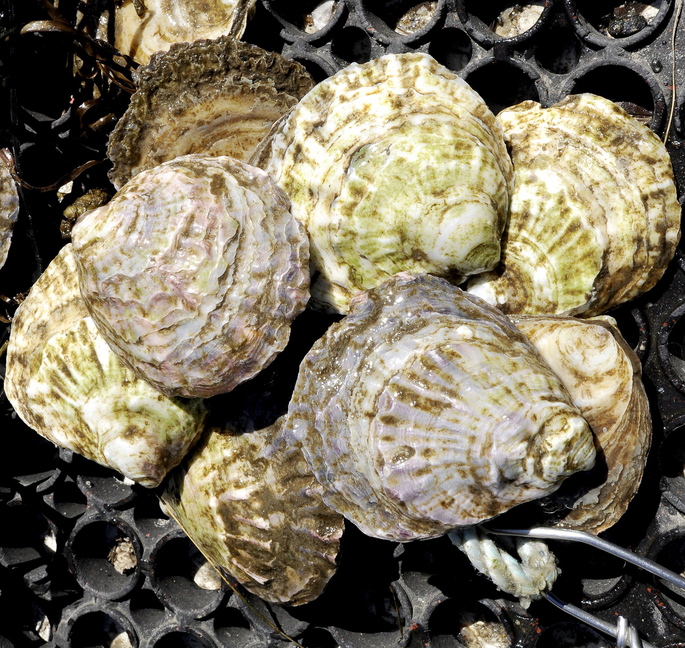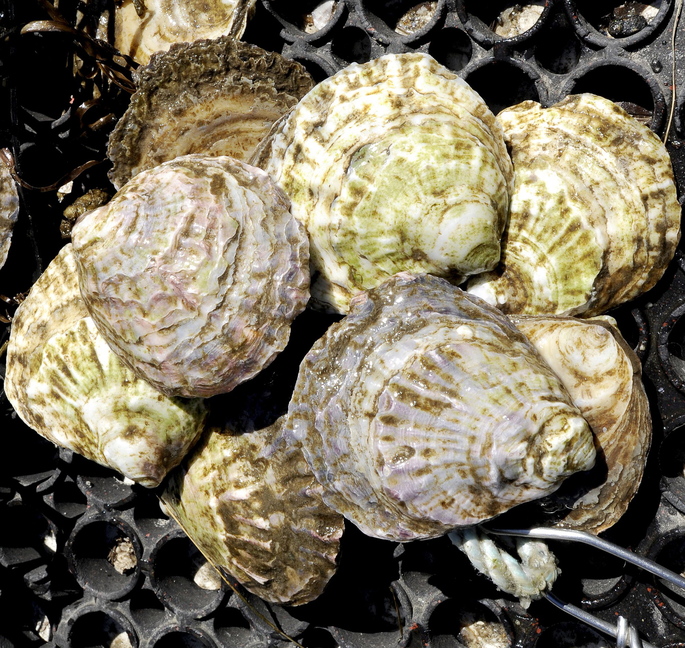NEW YORK — “Everyone’s growing oysters,” Chris Quartuccio says over his shoulder as he paddles a kayak across Long Island’s Great South Bay, where he’s raising some 300,000 Blue Island oysters on the shallow seafloor 50 miles east of Manhattan. He might be right.
Close to 100 oyster farms have sprung up during the past decade or so, in bays, creeks and tidal ponds strung along the Atlantic Seaboard from Virginia to Canada’s Prince Edward Island, according to Bloomberg Pursuits magazine.
Each oyster variety has its own distinctive look and flavor and its own fanciful name, including Walrus & Carpenter, Matunuck and, Quartuccio’s best-seller, Naked Cowboy, a favorite at the Four Seasons Restaurant in New York.
A century and a half ago, oysters and oyster canneries were a major industry. Oysters fed Native Americans and sustained early European settlers; 19th-century Americans consumed oysters more often than beef. Oyster beds were the coral reefs of the Northeastern U.S., keeping water free of silt and sustaining rich fishing grounds. By the late 1800s, overharvesting had destroyed many of the most productive beds, and by the 1960s, pollution and farm runoff had killed much of the rest. The 1972 Clean Water Act offered oysters a mulligan, and in the past decade, a locavore oyster revolution has taken off.
“People love tasting variety, and oysters have it even more than wine,” says Rowan Jacobsen, author of “A Geography of Oysters,” a guide to the U.S. locavore oyster scene. “They’re a concentrated form of the water in which they grow.”
Algae, minerals and even the salinity and temperature of the water contribute to what connoisseurs call a bivalve’s meroir, a maritime play on the wine world’s terroir.
“Each has its own individual taste, based on three characteristics: species, the water they’re raised in and the farming method,” says Rick Moonen, a Las Vegas chef and leader of the sustainable seafood movement. What’s more, oysters are “fantastic little vacuum cleaners,” Moonen says. “The more we produce, the cleaner our environment becomes.”
A sampling of oysters from the East Coast attests to the palate’s astonishing ability to distinguish subtle differences in salinity, vegetable tastes (hints of cucumber, kelp, spinach) and consistency – from the fleshy, watery oysters of Florida and the Chesapeake Bay to the concentrated salts and tangy mineral notes of those from the chilly waters of Maine and Prince Edward Island.
Growing oysters is as much an art as a science.
“The flow is the important thing,” says Reg Tuthill, the 77-year-old son and grandson of oystermen, whose Oysterpond- brand oysters are among the richest and briniest from Long Island’s North Fork, with a fine shell; firm, luminescent, beige flesh; and the distinct taste of the open ocean.
Like most oysters, they’ll become sweeter and meatier as they fatten up for the winter cold. Tuthill hangs his oysters in bags attached to swimming noodles – those flexible, foam pool toys – which he secures to a dock. Beyond cleaning the oysters and their cages every few weeks to keep out pests – from minuscule sponges to thumb-sized crabs that pry open the shells of immature oysters – there’s little more that an oyster farmer can do.
“The guy upstairs is the best partner in the world,” Tuthill says. “He supplies the sunshine and the food. All we have to do is put the oysters in bags.”
Mike Osinski, based in nearby Greenport, favors the French approach. A retired software developer whose programs helped create the mortgage instruments at the heart of the 2008 financial crisis, Osinski says he learned one day that his waterfront home was adjacent to 5 acres of prime oyster-growing bottom.
“Rate of flow times density of algae equals rate of growth,” Osinski explains, following a short lecture on the origins of the mortgage crisis and the flaws of subprime lending. (The models the banks used to make loans never accounted for falling home prices, Osinski says.)
Using a method developed along the coast of Brittany, France, Osinski keeps his oysters floating just off the bottom of the harbor, where a constant current brings with it nutrient- rich water. Osinski lets his oysters grow out, long and flat, leaving most to mature in three years instead of the typical 14 to 18 months. The result is an elegant, well-muscled oyster with a marked salinity – clean of the vegetal notes that come from muddy bottoms in slow-moving waters.
Osinski says he recently gave up delivering oysters from his aging Cadillac STS and bought a Dodge Sprinter cargo van to serve clients that include Daniel Humm’s Eleven Madison Park, Mario Batali’s Esca and David Chang’s Momofuku empire.
Today, oyster farming is a $40 million-a-year industry on the East Coast and in the Pacific Northwest. It’s even larger in Florida and the Gulf of Mexico, where commercial shuckeries pack the larger, blander Southern oysters into buckets and sell them by the pound for frying and stews, says Bob Rheault, who runs the East Coast Shellfish Growers Association.
While small-scale oystering supports several thousand jobs, and the mollusks have helped revitalize coastal ecosystems, the real boon has been to consumers, who can now choose from among many dozens of varieties at restaurants across the country. Moonen offers three West Coast and three East Coast oysters every day at his RM Seafood in landlocked Las Vegas.
“Oyster taverns were the original New York restaurants in the 19th century,” says Krystof Zizka, co-owner of and oyster curator at Brooklyn’s Maison Premiere, which has 33 varieties on its menu at any given time and sells about 13,000 oysters a week. “There’s a resurrection of oysters. It’s hard to keep up with it all.”
Send questions/comments to the editors.




Success. Please wait for the page to reload. If the page does not reload within 5 seconds, please refresh the page.
Enter your email and password to access comments.
Hi, to comment on stories you must . This profile is in addition to your subscription and website login.
Already have a commenting profile? .
Invalid username/password.
Please check your email to confirm and complete your registration.
Only subscribers are eligible to post comments. Please subscribe or login first for digital access. Here’s why.
Use the form below to reset your password. When you've submitted your account email, we will send an email with a reset code.